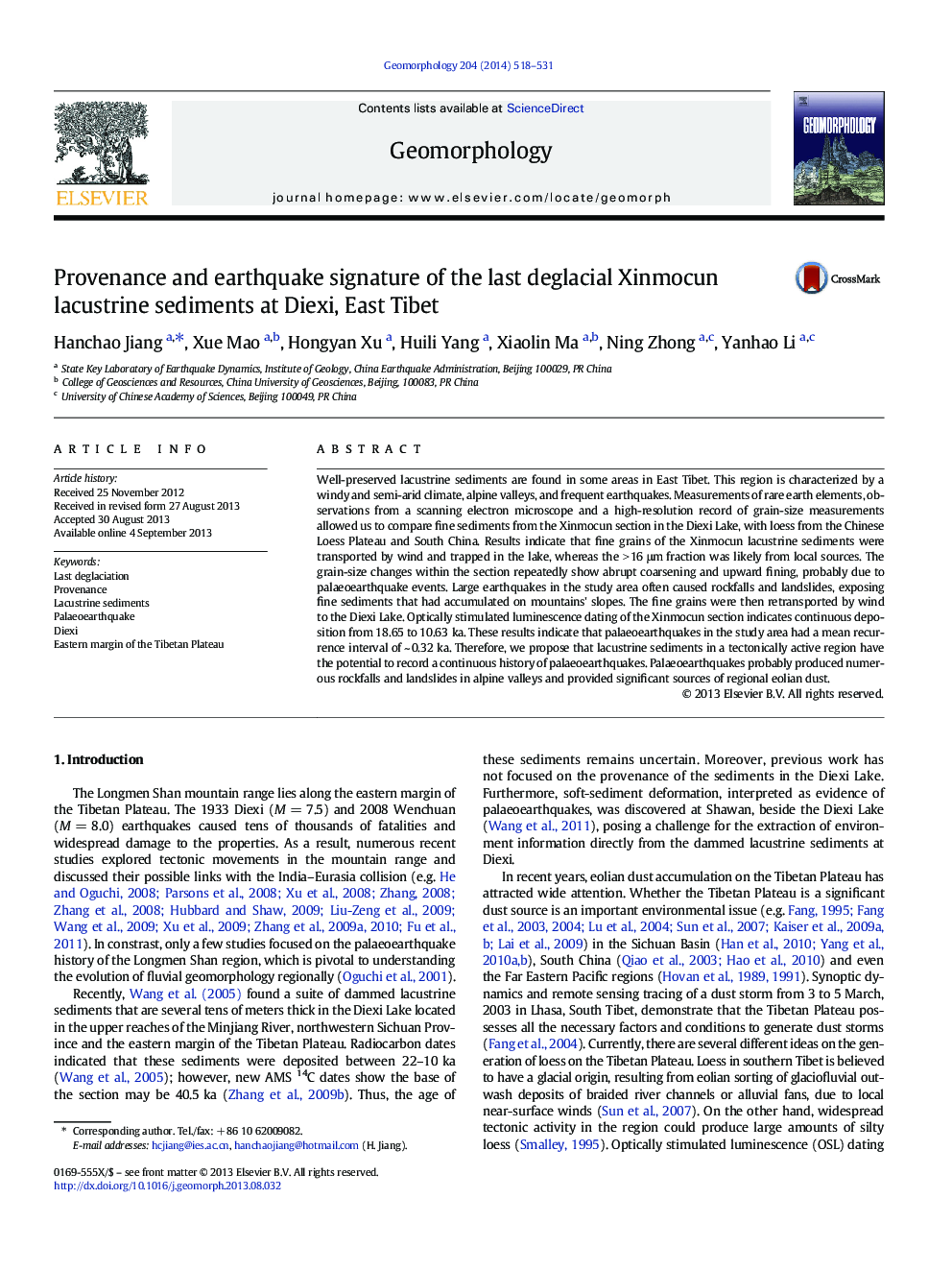| کد مقاله | کد نشریه | سال انتشار | مقاله انگلیسی | نسخه تمام متن |
|---|---|---|---|---|
| 6432780 | 1635445 | 2014 | 14 صفحه PDF | دانلود رایگان |

- OSL dating suggested a last deglacial sequence of lake sedimentation in East Tibet.
- REE, SEM, SUS and grain-size measurements were carried on the lake sediments.
- The > 16 μm fraction of the Xinmocun section was wind-blown regional dust.
- The grain-size record revealed a recurrence interval of ~Â 0.32Â ka of palaeoearthquake.
- Earthquake-induced rockfalls and landslides provided significant dust sources.
Well-preserved lacustrine sediments are found in some areas in East Tibet. This region is characterized by a windy and semi-arid climate, alpine valleys, and frequent earthquakes. Measurements of rare earth elements, observations from a scanning electron microscope and a high-resolution record of grain-size measurements allowed us to compare fine sediments from the Xinmocun section in the Diexi Lake, with loess from the Chinese Loess Plateau and South China. Results indicate that fine grains of the Xinmocun lacustrine sediments were transported by wind and trapped in the lake, whereas the > 16 μm fraction was likely from local sources. The grain-size changes within the section repeatedly show abrupt coarsening and upward fining, probably due to palaeoearthquake events. Large earthquakes in the study area often caused rockfalls and landslides, exposing fine sediments that had accumulated on mountains' slopes. The fine grains were then retransported by wind to the Diexi Lake. Optically stimulated luminescence dating of the Xinmocun section indicates continuous deposition from 18.65 to 10.63 ka. These results indicate that palaeoearthquakes in the study area had a mean recurrence interval of ~ 0.32 ka. Therefore, we propose that lacustrine sediments in a tectonically active region have the potential to record a continuous history of palaeoearthquakes. Palaeoearthquakes probably produced numerous rockfalls and landslides in alpine valleys and provided significant sources of regional eolian dust.
Journal: Geomorphology - Volume 204, 1 January 2014, Pages 518-531